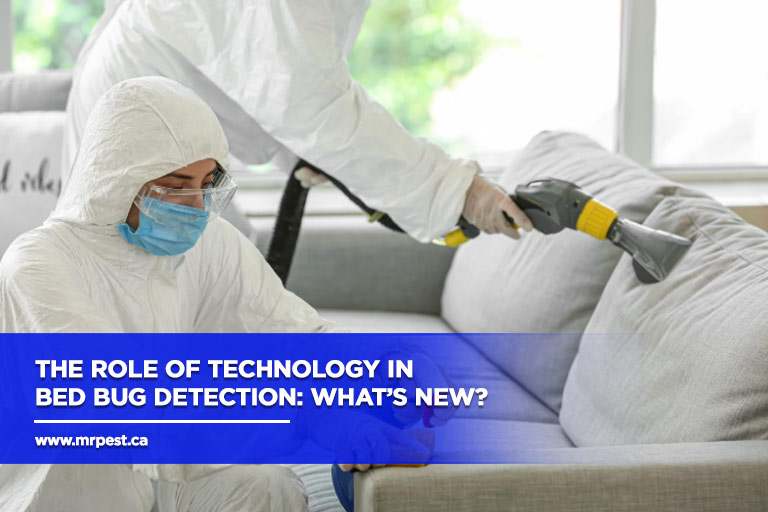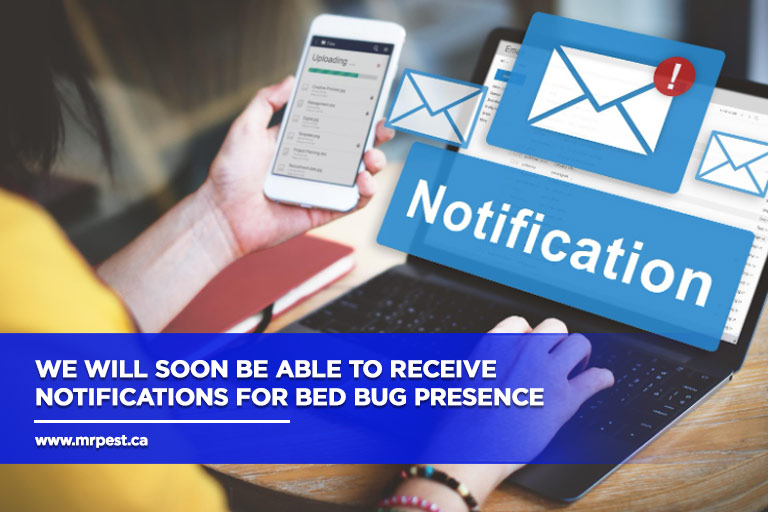In recent years, bed bugs have made a notable comeback, causing concern for homeowners and businesses alike. These pests are notorious for their ability to hitchhike on luggage, clothing, and furniture, often travelling unnoticed, as highlighted in a post by Maclean’s. By day, they hide in cracks and crevices, emerging at night to feed on human blood.
This elusive behaviour makes early detection crucial. Fortunately, advancements in technology are transforming how we identify and manage bed bug infestations. From smart sensors to sophisticated thermal imaging, new tools are making it easier than ever to catch these pests before they become a significant problem.
Let’s delve into the latest technological innovations in bed bug detection and explore how these cutting-edge solutions are revolutionizing our approach to pest control.
Advances in Bed Bug Detection Technology
Technology has significantly enhanced our ability to detect bed bugs with greater accuracy and efficiency. Here’s a look at some of the most promising advancements in bed bug detection technology:
High-Tech Monitoring Systems
Modern bed bug monitoring devices offer continuous, real-time surveillance of pest activity. These systems often use adhesive traps and digital sensors to detect bed bugs as they move around.
The data collected is then transmitted to a central platform, where it can be analyzed to identify patterns and potential infestations. This technology not only helps in early detection but also enables rapid response, reducing the risk of a full-blown infestation.
Smart Sensors and IoT Integration
Smart sensors are revolutionizing bed bug detection by offering more precise and immediate monitoring. These sensors are often placed in strategic locations where bed bugs are likely to hide, such as behind headboards or within mattress seams.
Integrated with Internet of Things (IoT) technology, these sensors can send alerts to your smartphone or computer if bed bug activity is detected. This integration allows for remote monitoring and control, making it easier to manage and address potential problems promptly.
Advanced Thermal Imaging
Thermal imaging cameras have become a powerful tool in bed bug detection. These cameras detect heat signatures emitted by bed bugs and their nests, even when they are hidden within walls, furniture, or flooring.
By capturing these thermal patterns, pest control professionals can pinpoint the exact locations of infestations without having to dismantle or disturb areas. This method is particularly useful for identifying bed bugs in hard-to-reach places and assessing the extent of an infestation quickly.
Innovative Methods for Early Detection
Early detection is crucial to preventing bed bug infestations from escalating into more serious problems. Recent innovations have introduced several cutting-edge methods to detect these pests before they become a significant issue. Here’s a look at some of the most promising techniques:
Canine Bed Bug Detection

The process of canine detection includes using specially trained dogs to find bed bugs. These dogs have an exceptional sense of smell that allows them to detect bed bugs and their eggs, even in hidden or hard-to-reach areas.
When combined with technology, such as GPS tracking and digital reporting systems, canine detection becomes even more effective. The precision of canine detection helps locate infestations quickly, allowing for targeted treatment and minimizing disruption.
AI and Machine Learning
Artificial Intelligence (AI) and machine learning are making significant strides in bed bug detection. AI systems analyze data from various detection devices, such as traps and sensors, to identify patterns and predict potential infestations. Machine learning algorithms continuously improve their accuracy by learning from previous detection data.
These technologies can process vast amounts of information quickly, providing insights that help prevent infestations before they escalate. By leveraging AI and machine learning, pest control professionals can enhance their strategies and respond more effectively to bed bug threats.
Benefits of Modern Detection Technologies
The advancements in bed bug detection technology offer numerous benefits, significantly improving how we manage and address infestations. Here’s a look at some of the key advantages:
Increased Accuracy
Modern detection technologies, such as smart sensors and thermal imaging, provide a high level of accuracy in identifying bed bug infestations. These tools reduce the likelihood of false positives and negatives, ensuring that pest control efforts are targeted and effective.
Whether dealing with bed bugs in Collingwood and Barrie, or elsewhere, accurate detection helps in precisely locating and addressing the problem, leading to more successful outcomes.
Cost-Effectiveness
Investing in advanced detection technologies can be cost-effective in the long run. Early and accurate detection helps prevent bed bugs from spreading and causing more extensive infestations, which can be costly to manage.
By catching bed bugs early, these technologies reduce the need for more extensive treatments and repairs, ultimately saving money on pest control and property damage.
Convenience and Efficiency
Modern technologies streamline the detection process, making it more convenient and efficient for both homeowners and pest control professionals. Real-time alerts and remote monitoring capabilities allow for quicker responses and less disruption.
For instance, IoT-enabled sensors can notify you immediately if bed bugs are detected, enabling prompt action without the need for frequent physical inspections. This efficiency not only saves time but also minimizes the inconvenience associated with pest control efforts.
Future Trends in Bed Bug Detection
As technology continues to evolve, the future of bed bug detection looks promising with several emerging trends poised to revolutionize how we manage these pests. Here’s a glimpse into what’s on the horizon:
Emerging Technologies
The future of bed bug detection is being shaped by a variety of emerging technologies. One such advancement is the development of nanoscale sensors that can detect bed bug pheromones with high precision.
These sensors could be embedded in various materials, providing continuous, real-time monitoring for bed bug activity. Innovations in drone technology may also soon allow for aerial inspections of large areas, providing a comprehensive overview of potential infestations.
Integration with Smart Home Systems
The integration of bed bug detection technology with smart home systems is an exciting trend. Future systems may include sensors connected to smart home hubs, allowing homeowners to receive notifications about bed bug activity directly through their home automation systems.
This seamless integration will enable more proactive pest management, with automated alerts and even remote control of detection devices.
Advanced AI and Predictive Analytics
Artificial Intelligence (AI) and predictive analytics are set to play a larger role in bed bug detection. AI algorithms will become more sophisticated, analyzing data from various sources to predict potential infestations before they occur.
Predictive models will use historical data and real-time information to forecast bed bug activity patterns, allowing for preemptive measures and reducing the risk of severe infestations.
Enhanced Data Analytics
Future bed bug detection technologies will benefit from enhanced data analytics capabilities. By aggregating and analyzing vast amounts of data from detection devices, AI and machine learning systems will provide deeper insights into bed bug behaviour and infestation trends.
This comprehensive data analysis will support more effective pest management strategies and improve the overall efficiency of bed bug control efforts.
Stay Ahead of Bed Bugs with Cutting-Edge Technology
As bed bugs in Barrie and Collingwood continue to challenge homeowners, staying informed about the latest detection technologies is crucial. Embracing these innovations can lead to more effective and efficient pest management.
For expert assistance with bed bug detection and treatment, contact Mr Pest Control at (705) 739-7378. Don’t let bed bugs take over your space – act now and stay protected!




